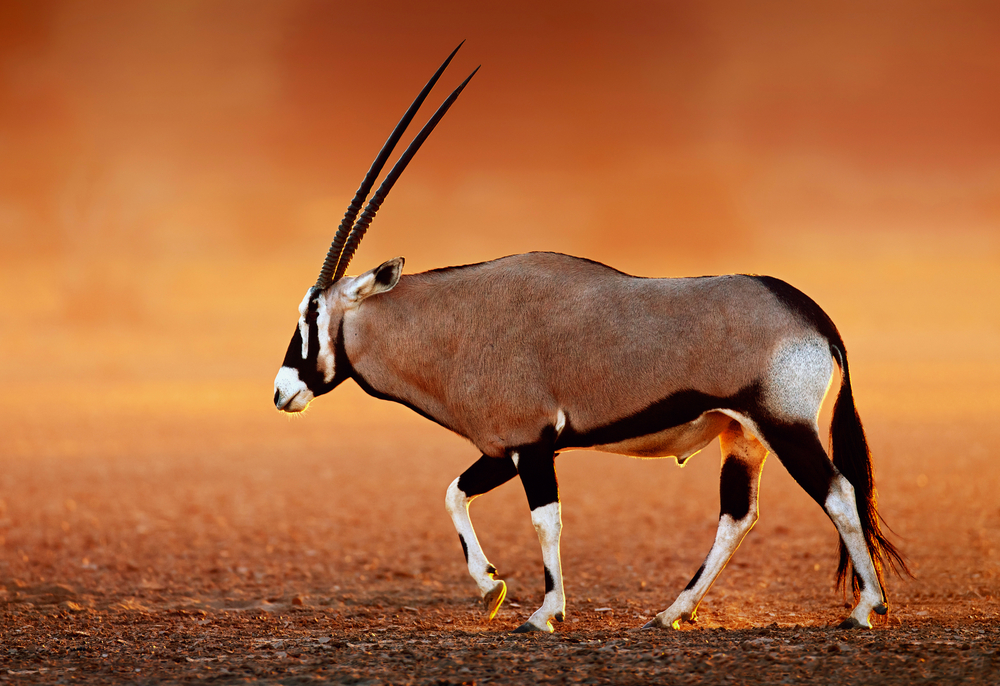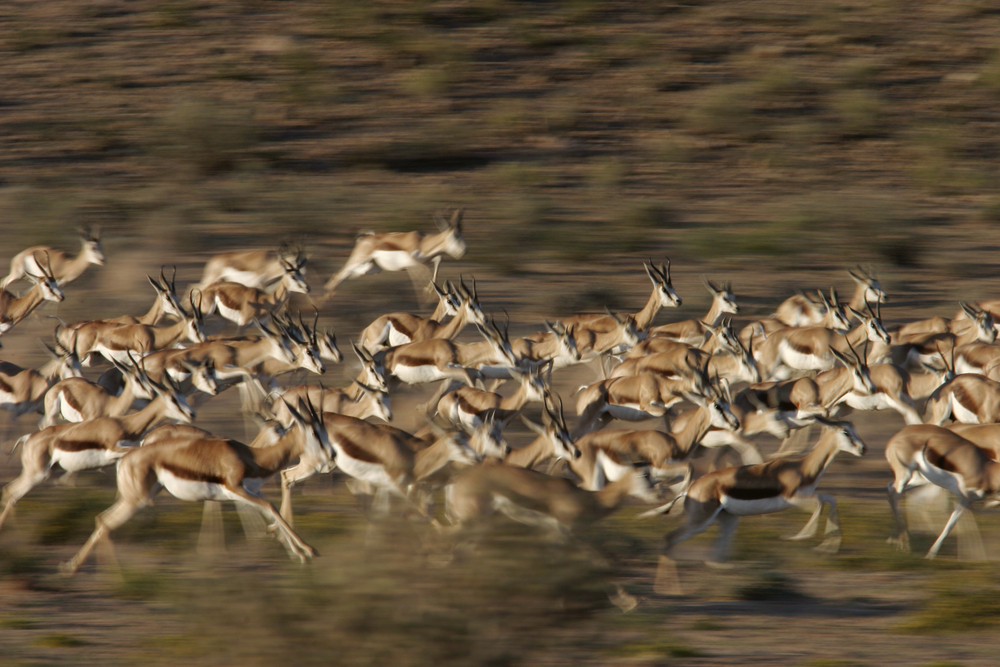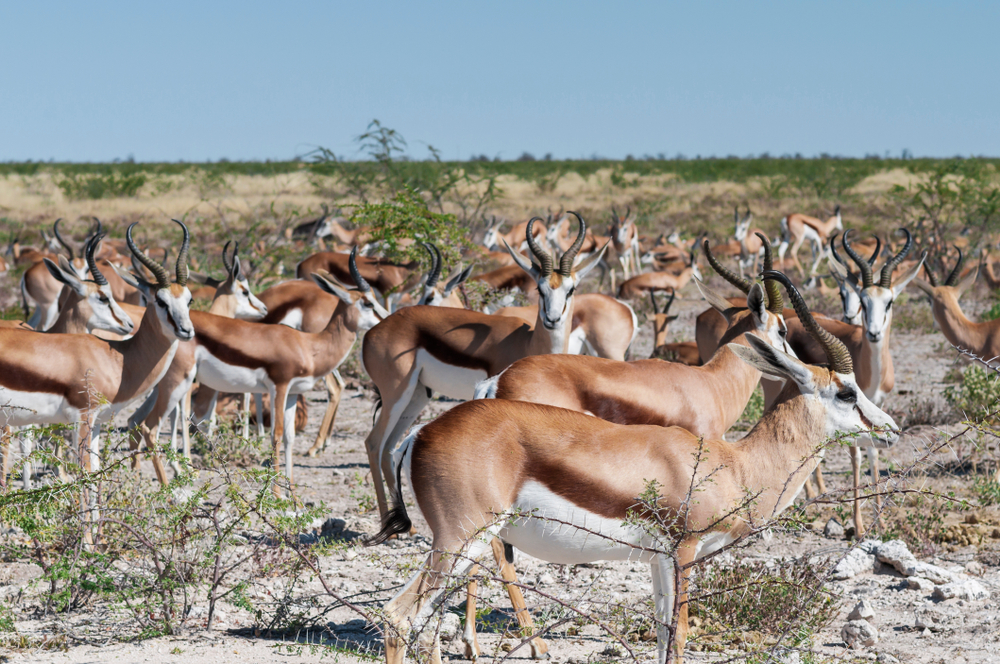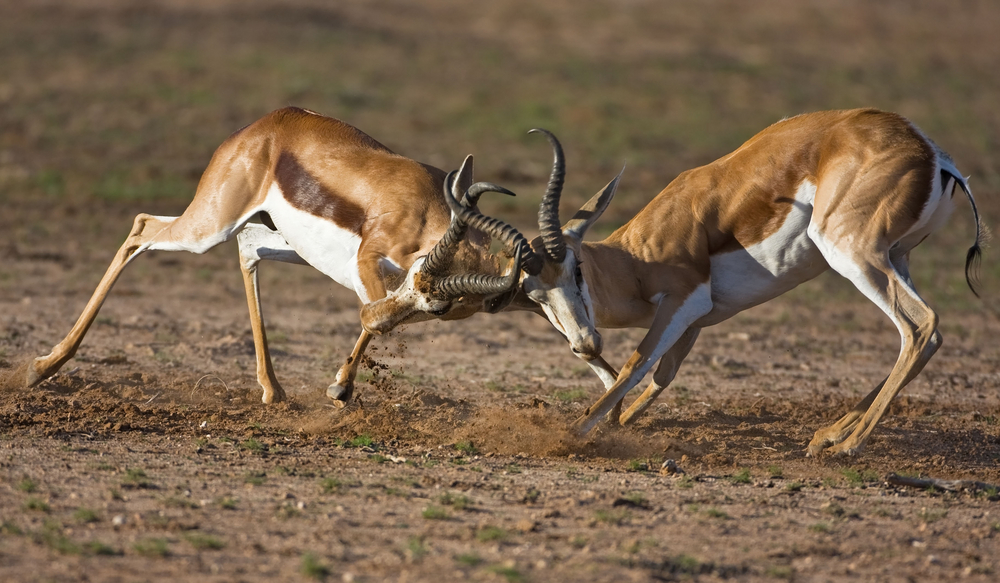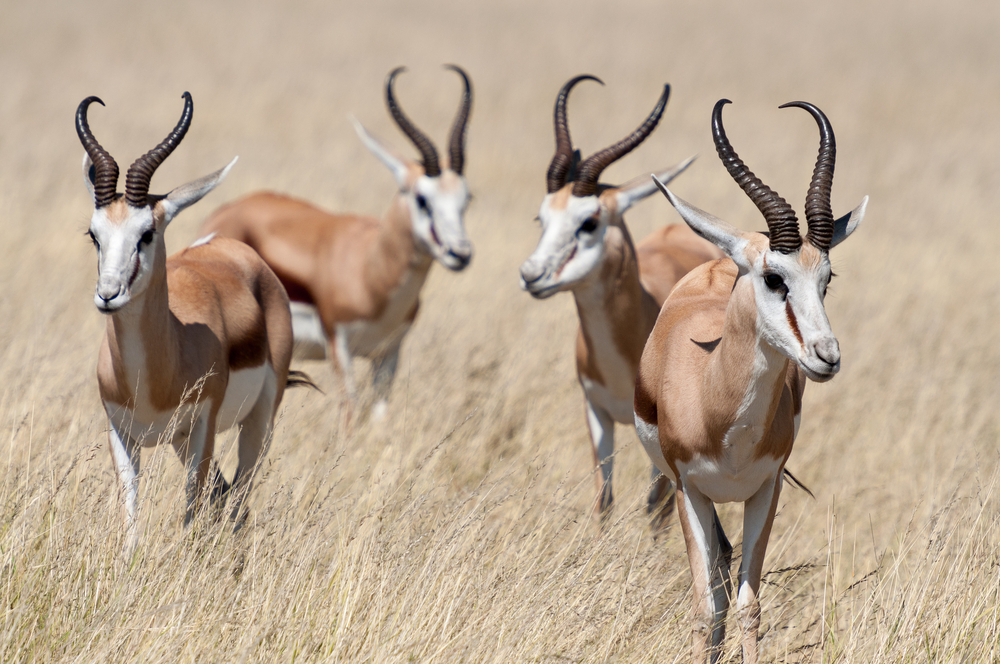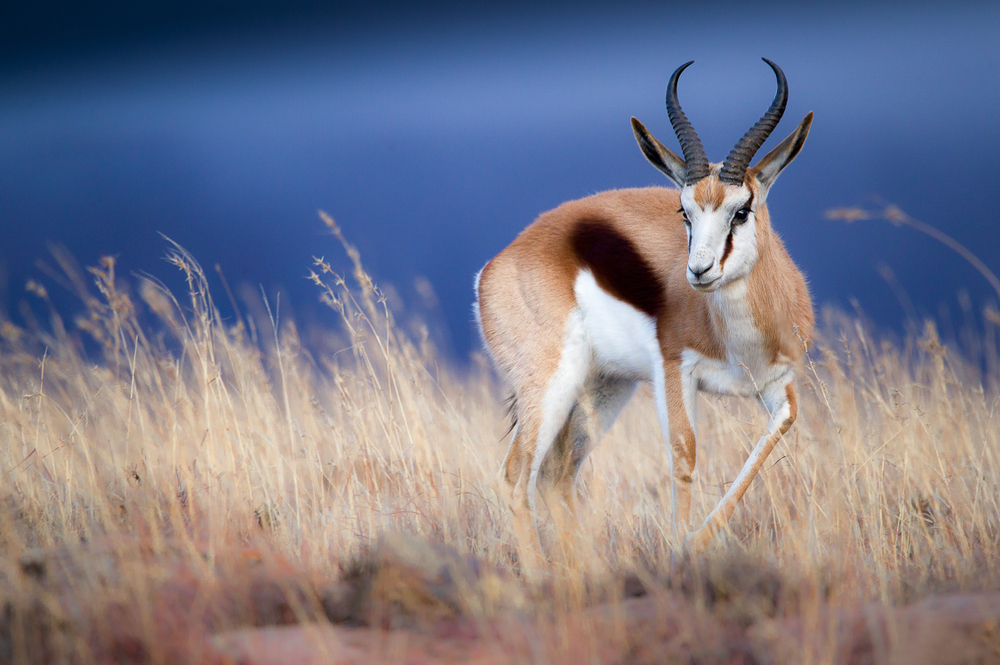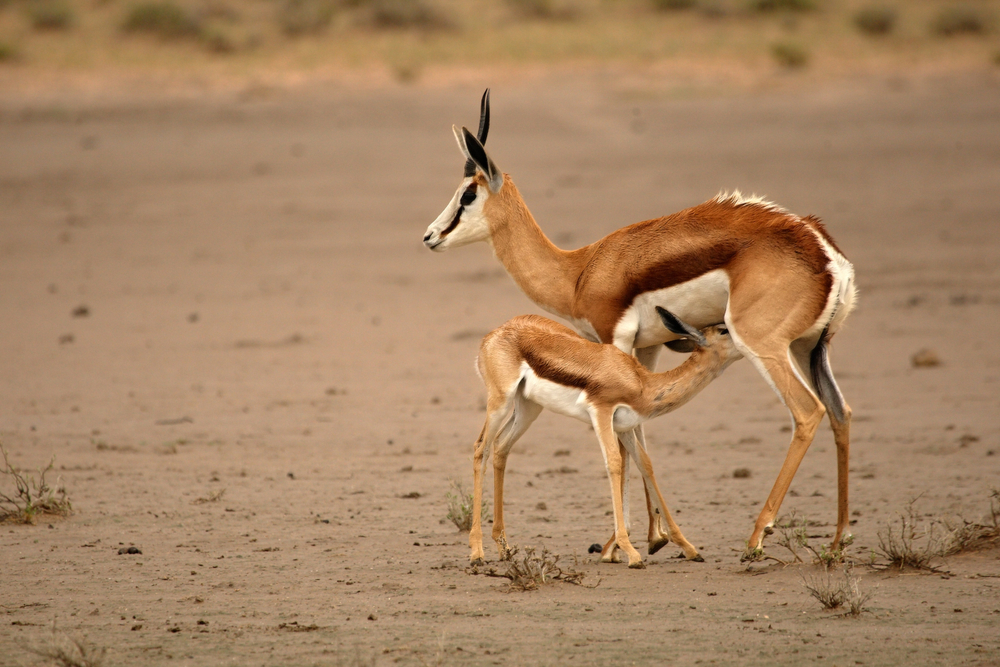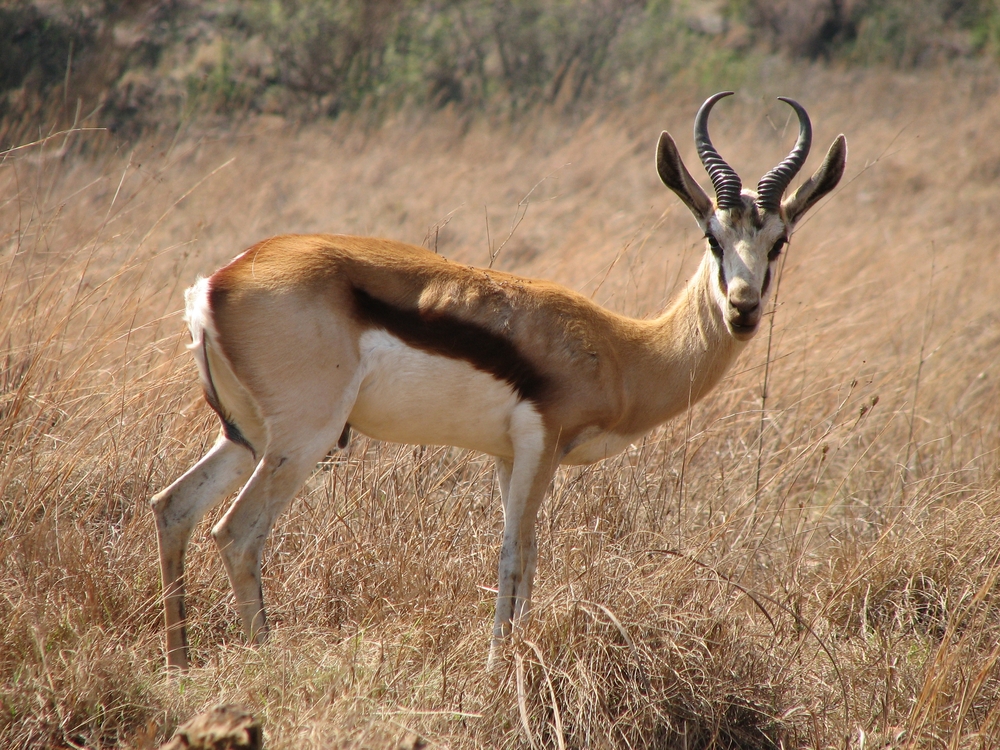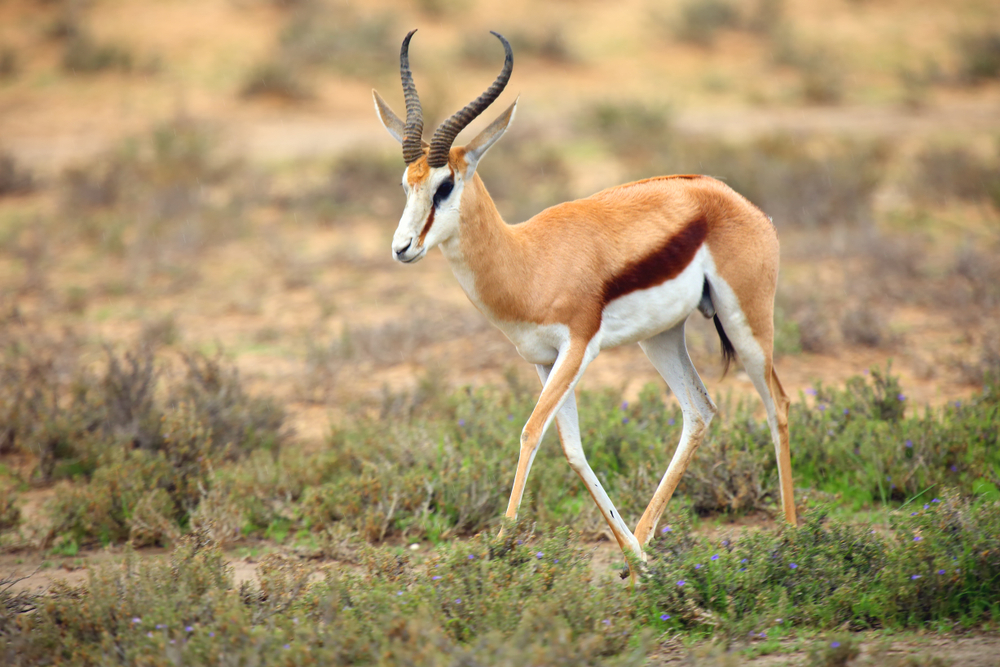Springboks (Antidorcas marsupialis) exhibit various characteristics and behaviors that differentiate them from other antelope species. Here’s a comparison between Springboks and other antelope, highlighting some of the key differences:
- Pronking Behavior: Springboks are known for their unique pronking behavior, which involves leaping into the air with an arched back. This behavior is not commonly observed in other antelope species and is a distinctive feature of Springboks.
- Distinctive Coloration: Springboks have a distinct coat coloration with cinnamon-brown to light brown fur and prominent white facial and belly markings. This coloration sets them apart from many other antelope species, which may have different coat colors and patterns.
- Pouch (Vestigial): Springboks have a vestigial pouch or flap of skin just in front of their hips. This pouch is a unique anatomical feature that doesn’t serve a functional purpose but is a characteristic of the species.
- Adaptation to Semi-arid Habitats: Springboks are well-adapted to semi-arid and arid environments, where they can extract moisture from the vegetation they consume. Their nomadic behavior and ability to migrate in search of resources are adaptations specific to their habitat.
- Social Structure: While Springboks can form herds for protection and vigilance against predators, they also exhibit solitary behaviors, making their social structure more flexible compared to some other antelope species with more rigid herd structures.
- Gestation Period: Springboks have a relatively short gestation period of around 5.5 to 5.7 months, which is shorter than that of many other antelope species. This adaptation allows them to time births with periods of higher food availability.
- Speed and Agility: Springboks are renowned for their incredible speed and agility, capable of running at speeds of up to 60 miles per hour (97 kilometers per hour). While other antelope species can also be fast runners, Springboks are among the fastest.
- Range and Habitat: Springboks are primarily found in the semi-arid regions of southern Africa, which is a specific range not shared by all antelope species. Other antelope species may have different geographical distributions and habitat preferences.
It’s important to note that the antelope family (Bovidae) is diverse, comprising numerous species with varying characteristics and adaptations. While Springboks have unique traits that set them apart, each antelope species has its own set of features and behaviors that make it well-suited to its specific ecological niche.






































































